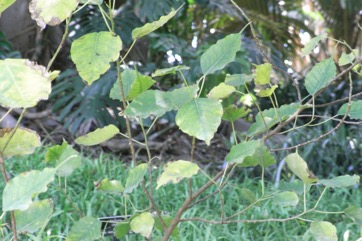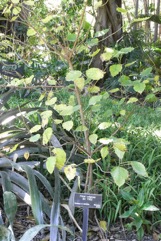Bo Tree, Peepul Tree

A tropical and subtropical plant. It often grows attached to other plants on rock walls and steep slopes. They are common all over India. It is a tropical and subtropical plant. It suits hardiness zones 10-12. In XTBG Yunnan.
Also known as:
Ali, Ara budi, Arasa marum, Arasamaram, Arasu, Asatha, Asatthwa, Ashawatha, Ashuvatham, Bawdi-nyaung, Bodhi tree, Bodi, Bunut kaloja, De, Lagat, Mai-nyawng, Nyaung bawdi, Pakri tussa, Peepal, Pho-sii-ma-haa-pho, Pimpal, Pipal, Pipar, Pipari, Pipri, Po ton, Pu ti shu, Raghie, Rai, Ray, Sacred fig, Sali, Thon-pho
Synonyms
- Irostigma religiosa (L.) Gasparrini
Edible Portion
- Fruit, Leaf-buds
Where does Bo Tree grow?
Found in: Africa, Andamans, Asia, Australia, Bangladesh, Bhutan, British Indian Ocean Terr., BIOT, China, Dominican Republic, East Africa, East Timor, Egypt, Fiji, Haiti, Hawaii, Himalayas, India, Indochina, Indonesia, Israel, Laos, Libya, Madagascar, Malaysia, Mozambique, Myanmar, Nepal, North Africa, North America, Northeastern India, Pacific, Pakistan, SE Asia, Sikkim, Sri Lanka, Thailand, Timor-Leste, United States, Vietnam, West Indies, Zimbabwe
Notes: It is the sacred tree of the Hindus. There are about 800-1000 Ficus species. They are mostly in the tropics. There are 120 Ficus species in tropical America.
Status: A famine food.
Growing Bo Tree, Peepul Tree
Cultivation: Plants can be grown from seed or cuttings. They can also be grown from layers.
Edible Uses: The ripe fruit are eaten raw. The young leaves are cooked as a vegetable.
Production: It is a fast growing tree. Trees can live for hundreds or thousands of years.
Nutrition Info
per 100g edible portion| Edible Part | Energy (kcal) | Protein (g) | Iron (mg) | Vitamin A (ug) | Vitamin c (mg) | Zinc (mg) | % Water |
|---|---|---|---|---|---|---|---|
| - | - | - | - | - | - |
Bo Tree, Peepul Tree Photos


References
Acharya K. P. and Acharya, R., 2010, Eating from the Wild: Indigenous knowledge on wild edible plants in Parroha VDC of Rupandehi District, Central Nepal. International Journal of Social Forestry. 3(1):28-48
Arinathan, V., et al, 2007, Wild edibles used by Palliyars of the western Ghats, Tamil Nadu. Indian Journal of Traditional Knowledge. 6(1) pp 163-168
Barwick, M., 2004, Tropical and Subtropical Trees. A Worldwide Encyclopedic Guide. Thames and Hudson p 187
Basha, S. K. M., Ethnobotanical Trees of Sri Lanka Malleswara Wildlife Sanctuary; Eastern Ghats, Andhra Pradesh.
Bhogaonkar, P. Y. & Devarkar, V. D., 2018, Inventory for ethnovegetable knowledge of the tribals of Satpura hill area-Melghat, Dist. Amravati (India), Plantae Scientia, 2018; Vol. 01 Issue 01: 01-08
Bodkin, F., 1991, Encyclopedia Botanica. Cornstalk publishing, p 473
Bole, P.V., & Yaghani, Y., 1985, Field Guide to the Common Trees of India. OUP p 87
Bremness, L., 1994, Herbs. Collins Eyewitness Handbooks. Harper Collins. p 56
Brickell, C. (Ed.), 1999, The Royal Horticultural Society A-Z Encyclopedia of Garden Plants. Convent Garden Books. p 439
Burkill, I.H., 1966, A Dictionary of the Economic Products of the Malay Peninsula. Ministry of Agriculture and Cooperatives, Kuala Lumpur, Malaysia. Vol 1 (A-H) p 1030
Chowdhury, M. & Mukherjee, R., 2012, Wild Edible Plants Consumed by Local Communities of Maldah of West Bengal, India. Indian J.Sci.Res.3(2) : 163-170
Cundall, P., (ed.), 2004, Gardening Australia: flora: the gardener's bible. ABC Books. p 604
Dangol, D. R. et al, 2017, Wild Edible Plants in Nepal. Proceedings of 2nd National Workshop on CUAOGR, 2017.
Engel, D.H., & Phummai, S., 2000, A Field Guide to Tropical Plants of Asia. Timber Press. p 10, 83
Etherington, K., & Imwold, D., (Eds), 2001, Botanica's Trees & Shrubs. The illustrated A-Z of over 8500 trees and shrubs. Random House, Australia. p 328
Flora of China @ efloras.org Volume 5
Flora of Pakistan. www.eFloras.org
Ghosh, C. & Das A. P., 2011, Some useful and poisonous tea garden weeds from the Darjiling District of West Bengal, India. Pleione 5(1): 91 - 114
GUPTA,
Hearne, D.A., & Rance, S.J., 1975, Trees for Darwin and Northern Australia. AGPS, Canberra p 71
Hedrick, U.P., 1919, (Ed.), Sturtevant's edible plants of the world. p 308
Heywood, V.H., Brummitt, R.K., Culham, A., and Seberg, O. 2007, Flowering Plant Families of the World. Royal Botanical Gardens, Kew. p 218
Jabeen, A., et al, 2009, Indigenous uses of economically important flora of Margallah Hills National Park, Islamabad, Pakistan. African Journal of Biotechnology Vol. 8 (5), pp. 763-784
Jadhav, R., et al, 2015, Forest Foods of Northern Western Ghats: Mode of Consumption, Nutrition and Availability. Asian Agri-History Vol. 19, No. 4: 293-317
Krishen P., 2006, Trees of Delhi, A Field Guide. DK Books. p 96
Kunwar, R.M. & Bussmann, R. W., 2006, Ficus (Fig) species in Nepal: a review of diversity and indigenous uses. Lyonia 11(1)
Llamas, K.A., 2003, Tropical Flowering Plants. Timber Press. p 278
Lord, E.E., & Willis, J.H., 1999, Shrubs and Trees for Australian gardens. Lothian. p 55
Manandhar, N.P., 2002, Plants and People of Nepal. Timber Press. Portland, Oregon. p 234
Manju, S., and Sundriyal, R. C., 2001, Wild Edible Plants of the Sikkim Himalaya: Nutritive Values of Selected Species. Economic Botany 55(3): 377-390
Marandi, R. R. & Britto, S. J., 2015, Medicinal Properties of Edible Weeds of Crop Fields and Wild plants Eaten by Oraon Tribals of Latehar District, Jharkhand. International Journal of Life Science and Pharma Research. Vo. 5. (2) April 2015
McMakin, P.D., 2000, Flowering Plants of Thailand. A Field Guide. White Lotus. p 30
Plants of Haiti Smithsonian Institute http://botany.si.edu/antilles/West Indies
Prachi, K., et al, 2012, Underutilized wild fruits of North Maharashtra. Journal of Research in Plant Sciences. (2012) 1:071-076
PROSEA (Plant Resources of South East Asia) handbook, Volume 12 (1), 1999, Medicinal and poisonous
Purseglove, J.W., 1968, Tropical Crops Dicotyledons, Longmans. p 389
Rajkalkshmi, P. et al, 2001, Total carotenoid and beta-carotene contents of forest green leafy vegetables consumed by tribals of south India. Plant Foods for Human Nutrition 56:225-238
Recher, P, 2001, Fruit Spirit Botanical Gardens Plant Index. www.nrg.com.au/~recher/ seedlist.html p 6
Sahni, K.C., 2000, The Book of Indian Trees. Bombay Natural History Society. Oxford. p 155
Sarvalingam, A., et al, 2014, Wild edible plant resources used by the Irulas of the Maruthamalai Hills, Southern Western Ghats, Coimbatore, Tamil Nadu. Indian Journal of Natural Products and Resources 5(2):198-201
Schuler, S., (Ed.), 1977, Simon & Schuster's Guide to Trees. Simon & Schuster. No. 115
SHANKARNARAYAN & SAXENA,
SHORTT,
Singh, H.B., Arora R.K.,1978, Wild edible Plants of India. Indian Council of Agricultural Research, New Delhi. p 78
Smith, A.C., 1981, Flora Vitiensis Nova, Lawaii, Kuai, Hawaii, Volume 2 p 174
Sp. pl. 2:1059. 1753
Swaminathan, M.S., and Kochnar, S.L., 2007, An Atlas of major Flowering Trees in India. Macmillan. p 251
Topp, J. M. W., 1988, An Annotated Check List of the Flora of Diego Garcia, British Ocean Territory. Atoll Research Bulletin No. 313
Toppo, P. et al, 2016, Wild edible plants of Dhamtari district of Chhattisgarh, India. Van Sangyan Vol. 3, No. 4
Valder, P., 1999, The Garden Plants of China. Florilegium. p 285
World Checklist of Useful Plant Species 2020. Royal Botanic Gardens, Kew
www.worldagroforestrycentre.org/treedb/
Young, J., (Ed.), 2001, Botanica's Pocket Trees and Shrubs. Random House. p 387